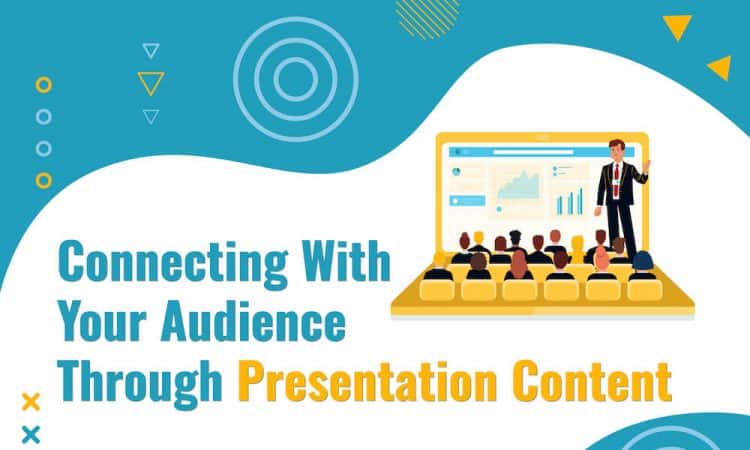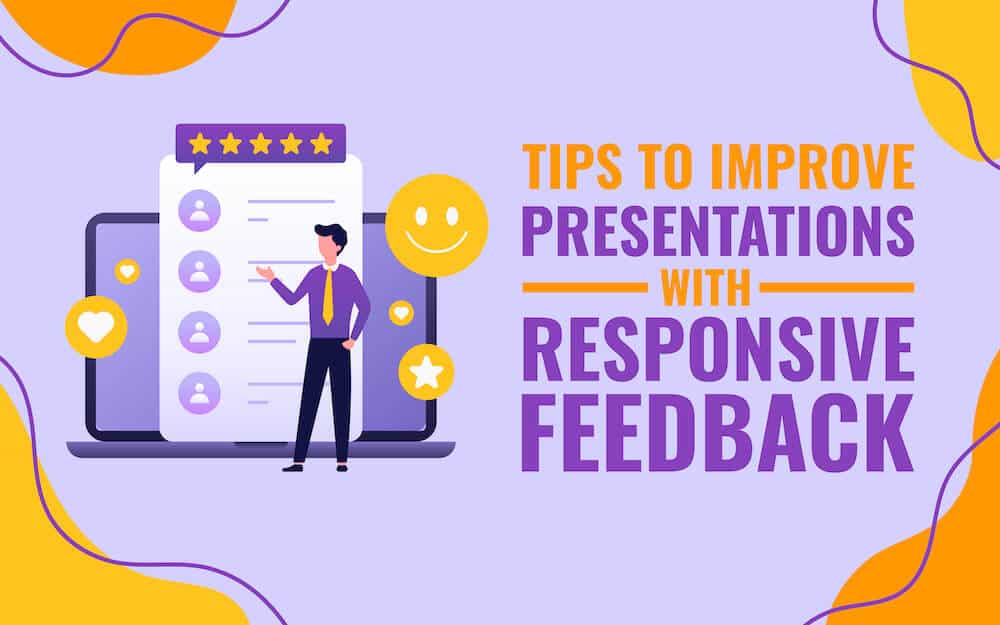
Let me ask you a question. What are the important elements/ingredients of a successful presentation?
A clear objective, high-definition visuals, an effective hook, an outstanding design, impactful delivery, and a call to action. Well done! You answered it correctly.
Wait! You have missed one crucial component that can make a huge difference in your presentation – the content. Don’t worry! You are not alone in overlooking this aspect. Many experienced presenters pay more heed to design than the content, completely ignoring the power of words.
The dilemma of whether to focus on the content or the design first during presentation creation is somewhat like a chicken or egg debate, of which there is no definite conclusion. No matter what you prefer first, you must understand that great content and gripping design go hand in hand and bring your slideshows to life. What matters most is – don’t neglect either content or design.
In this article, we have covered the importance and tips of drafting well-thought-out content for your next presentation. Let’s start!
Importance of Effective Presentation Content
1. Helps Set the Right Tone with the Audience
Effective content reflects the audience’s interests, needs, expectations, and concerns. It creates a sense of connection and relevance, keeping the audience intrigued.
Moreover, the content clarifies the purpose of your talk and supports your communication with the audience. It provides a feel or mood for your message.
2. Let You Weave a Story
Your content may include statistics, numerical data, sensitive information, customer testimonials, etc. These different types of content provide a strong base for weaving an interesting story that resonates with the audience’s real-life situations and pain points.
For creating a cohesive narrative that conveys a powerful message without overwhelming the audience and evokes sheer joy, surprise, fear, or other relevant emotions, you must consider these questions-
- What do you want to convey to the audience?
- What do you want the audience to know and understand?
- Why should your audience pay attention to what you have to say?
- How will you ensure that your audience understands you aptly?
Well-researched content helps you answer these questions.
3. Ensures Clarity and Understanding
A logically organized content, supported by relevant and high-definition visuals (diagrams and charts, icons, shapes, etc.), ensures that the audience grabs the key takeaways effortlessly and leaves the conference room/auditorium with the desired understanding.
By focusing on the simplicity, conciseness, consistency, relevance, and clarity of your presentation content, you can make your message credible and prevent confusion.
4. Allows You to Structure Your Slides Well
With an outline of content in your mind, you can arrange and organize it beautifully and logically in the slides. It makes it easy for the audience to follow your narrative and comprehend your point or idea aptly.
Well-organized slides let you present with confidence, which, in turn, empowers you to engage with the audience effectively.
5. Inspires Audience to Take Action
You deliver presentations with a specific purpose: to persuade the audience to purchase goods, motivate them to respond to your marketing survey, inspire them to contribute to your sustainability initiative, etc.
The content helps bridge the gap between what the audience knows and should know, influencing their thoughts and perceptions. Your content drives them to take the right action
6. Provides a Base for Compelling Design
Content provides creative direction and the foundational building block for the presentation design. It helps establish a visual hierarchy and cohesiveness, guiding which elements should be emphasized through typography, color, size, and placement.
Moreover, content helps designers determine the theme, visual style, and creative elements to be used in alignment with the core message. Content also provides insights into the target audience’s inclusivity and accessibility needs, allowing designers to create a unique presentation design that accommodates diverse audiences.
7. Keeps You Stay Within Your Time Limit
A thoughtfully outlined and structured presentation helps you stay within your time limit, giving you more control over the pacing.
For example, if you are running ahead of schedule, you can fill the time by having additional examples or optional content ready. Contrary to this, if you are short on time, you can prioritize the most important points to convey effectively, condensing or skipping other parts of your presentation.
8. Establishes Thought Leadership
Your presentation content serves as the medium for demonstrating your expertise, deep knowledge, unique perspective, and personal brand. You can communicate new ideas, innovative solutions, creative concepts, predictions, thought-provoking analyses, trends, practical takeaways, etc., using power-packed content that makes your audience believe and trust you.
All these help you position yourself as a thought leader in your field.
Hacks for Making Your Presentation Content-Rich
1. Know Your Audience
Each presentation has its own set of audience. You can’t address the needs and pain points of the audience of different niches through a single presentation. So, knowing your audience is important. It will assist you in targeting the right audience, tailoring your content to address their needs and pain points, and crafting a strong message that they remember for long.
Knowing your audience will also assist you in determining the formal constraints to consider and the level of detail you must incorporate.
For example, if you are an owner of a restaurant, your target audience will be locals and tourists. Locals might be interested in learning about special events, new additions to your restaurant, etc. Tourists might be interested in learning about amenities, services, pricing, and hot deals. Therefore, you must draft different content types to reach these two audience types.
2. Research Your Topic Thoroughly
As mentioned earlier, your content is an excellent medium to build trust, credibility, and rapport with the audience. And you would certainly not want to miss this opportunity by presenting wrong information and misleading facts or omitting important details. That’s why devoting time to researching your topic is crucial.
The more you research, the deeper your understanding of the subject matter will develop. It will make you confident, let you decide the style and tone, and prepare you to answer the challenging questions of the audience impressively.
Pro Tips: Use the right keywords to find initial information sources. Take reference for your content from credible sources only.
3. Include the Relevant Content
Of course, content is king. But it doesn’t mean that you should overload your slides with too much textual information. It may backfire. It can make your audience bewildered. They may get distracted, thus losing their attention. To prevent this situation, include content relevant to your topic, audience, purpose, and context.
For example, suppose you want to present the sales performance report to the CEO or senior executives. In that case, you must include the main highlights instead of comprehensive details, such as market-qualified leads, sales cycle length, close rate, average deal size, sales velocity, total sales, etc.
If you want to present the sales performance report to your team, you can include detailed information about goals and objectives, achievements, improvement areas, next steps, etc.
4. Choose the Right Content Type
There are various content types – videos, infographics, images, case studies, customer success stories, listicles, checklists, etc. They serve different purposes. Depending on the audience and purpose of your presentation, you must choose the correct content type.
Let’s understand it with an example. Suppose you have recently launched a new software product. You want to deliver a presentation to your customers to familiarize them with the product features, specifications, and working mechanisms. In this case, you can’t communicate effectively using infographics or images. Here, a well-created video can work wonders.
5. Include a Variety of Perspectives
Even if your audience shares common pain points, interests, and needs, they have different demographics, knowledge levels, and perceptions. So, if you want the audience to be involved and participate in your talk, you must consider reflecting diverse perspectives in your content.
The inclusion of different perspectives allows you to connect with a broader audience, making each of them feel valued. It also helps foster an inclusive atmosphere and promote open-mindedness, encouraging the audience to consider alternative experiences, opinions, and viewpoints.
6. Incorporate Statistics and Data
Data and statistics validate your arguments, supporting points, and the core message. Additionally, they add credibility to your content.
Another aspect to consider is the apt visualization of statistical and data-driven data. For this, you can use charts, graphs, maps, dashboards, and other visuals. Choose the right visual to represent specific data.
For instance, if you are a financial analyst and want to deliver a presentation on the last month’s financial performance of the company. In one of the slides, you want to showcase statistics related to average transaction size by payment type (check, credit card, debit card, digital wallet, and cash). You can better represent it using a pie chart instead of a bar chart.
7. Make Your Content Interactive
The attention of the audience drops to zero after 10-15 minutes of presentation. You can draw their attention back by enhancing your presentation content and making it more personalized, interesting, and informative. You can add interactive elements, such as animations, polls, quizzes, etc. These elements transform passive listeners into active participants, keeping them hooked till the last slide.
You can also incorporate humor, stories, anecdotes, and practical tips to increase the audience’s engagement and involvement with your presentation.
8. Call to Action
A call to action (CTA) is an essential (but the most overlooked) aspect to leave a lasting impression on the audience and make your message memorable. A CTA depicts a specific recommendation, suggestion, or request you want your audience to follow after the presentation. It also guides them about what they are supposed to do with the information you shared.
So, include an easy-to-follow, specific, strong, and clear CTA that drives action. It could be – buying a product, contacting you for further information, signing up for a webinar or event, etc.
The Wrap Up
A well-crafted, concise, precise, relevant, and easy-to-follow content is pivotal for your presentation. It helps your audience understand the core message and take the desired action. Remember, good design alone can’t compensate for below-par content and vice versa. Rather than considering design and content as separate entities, leverage the power of duo to make your presentations an unforgettable experience.



